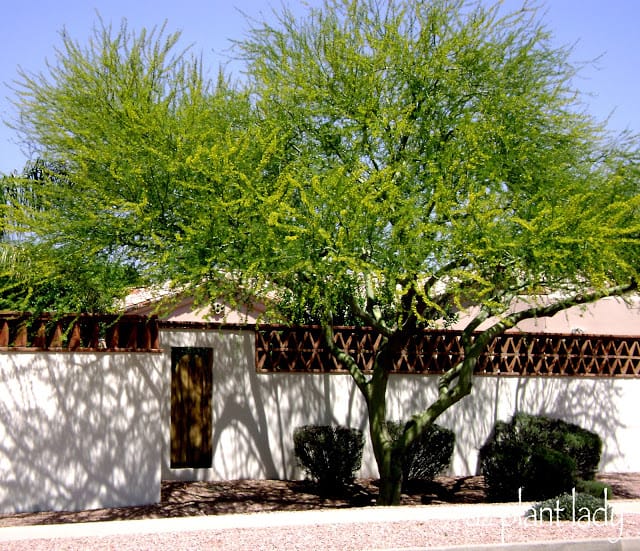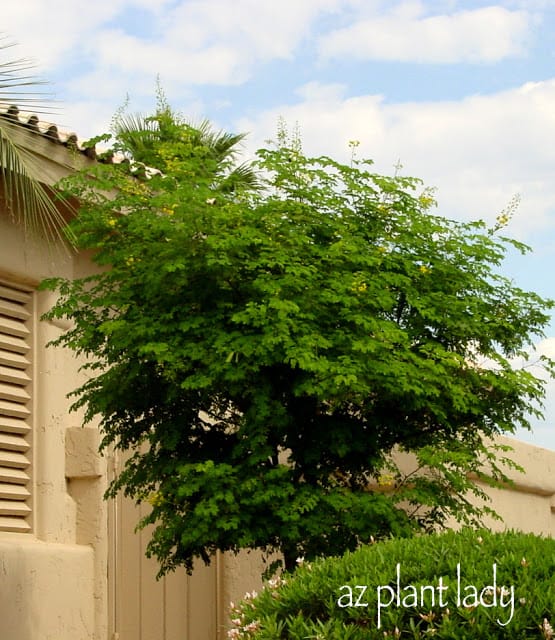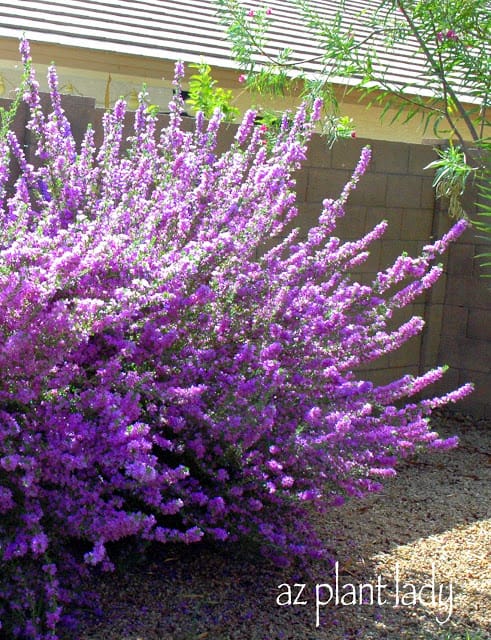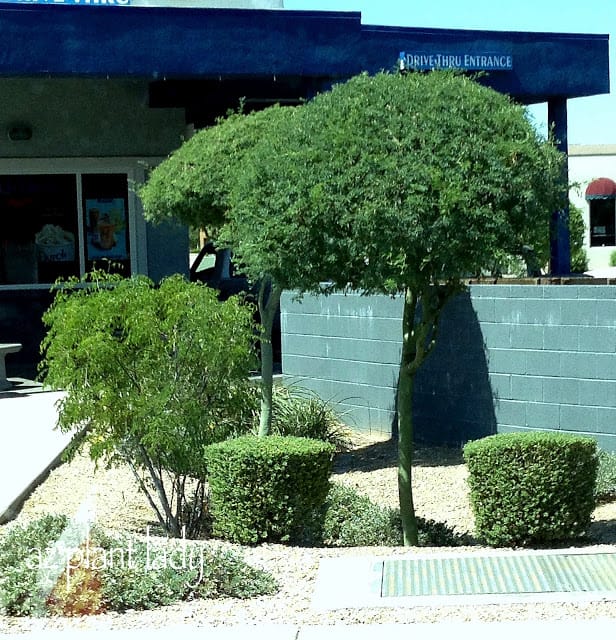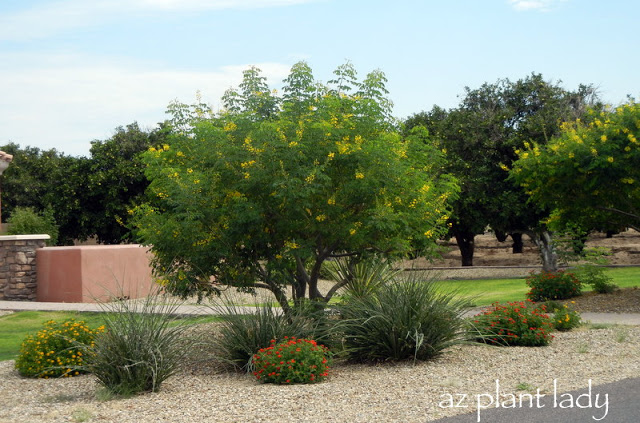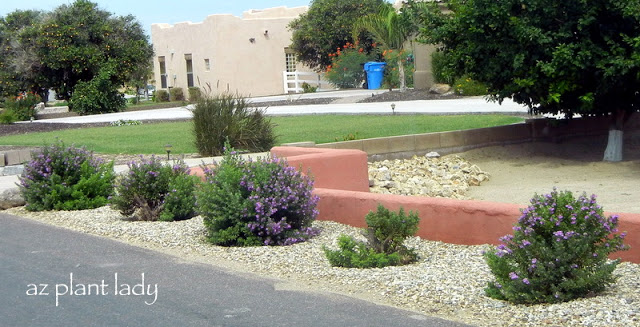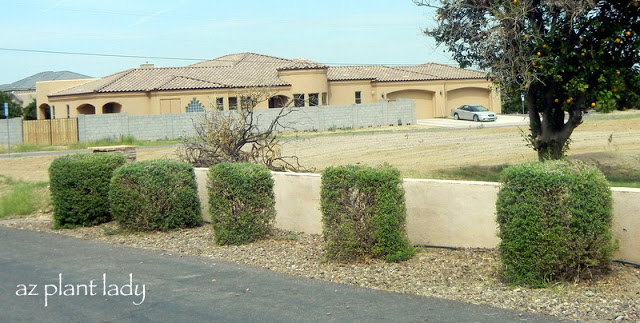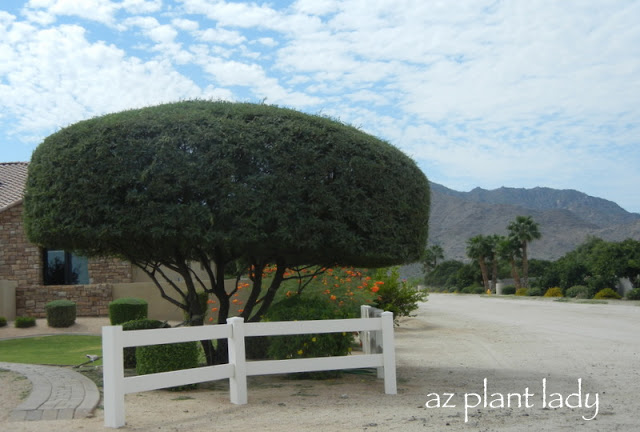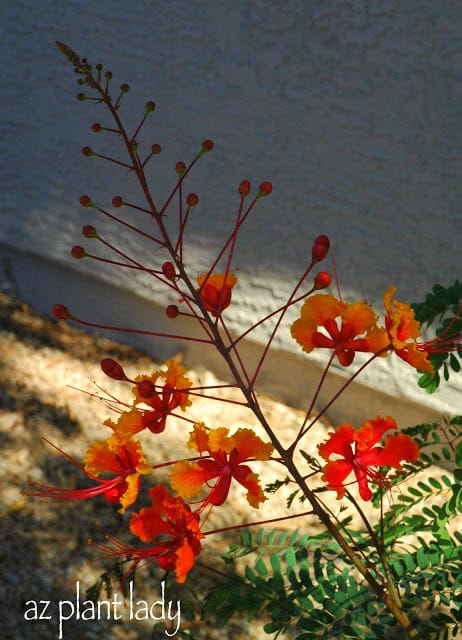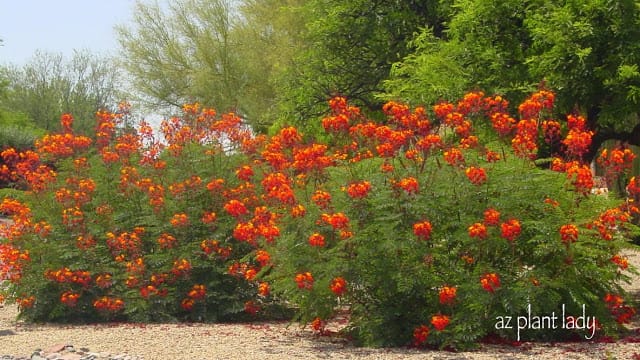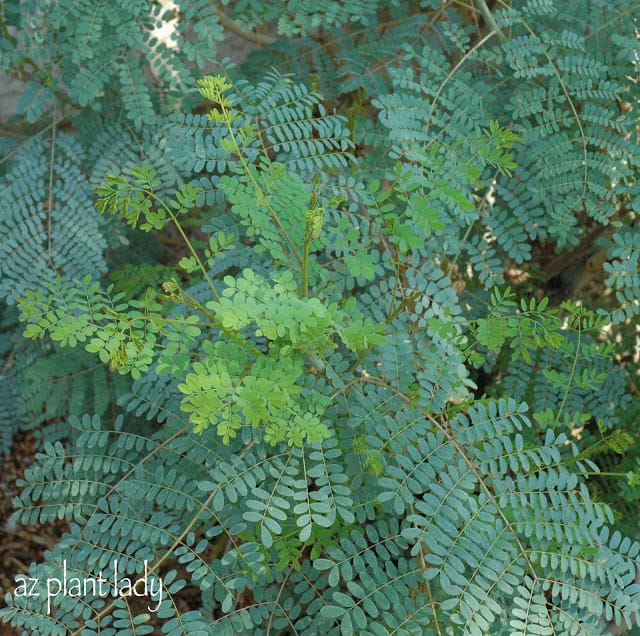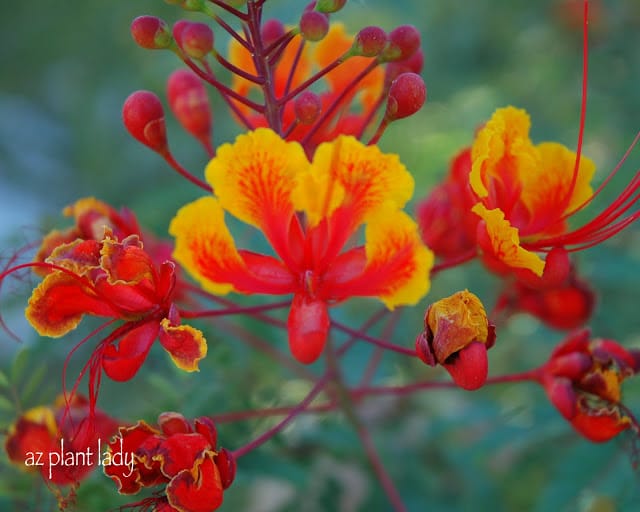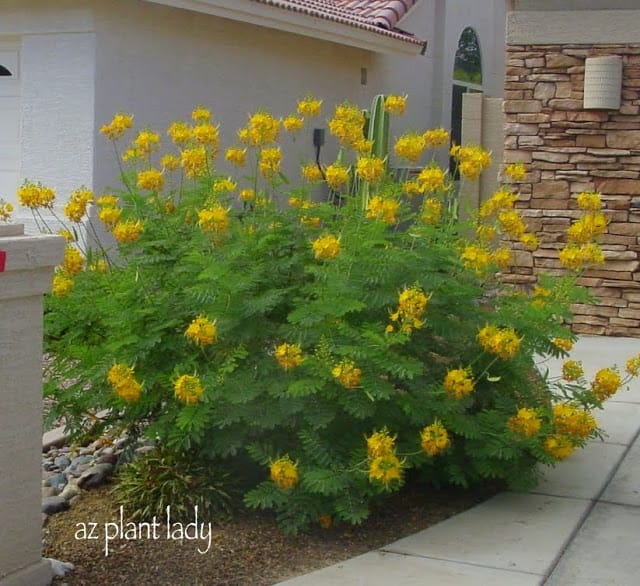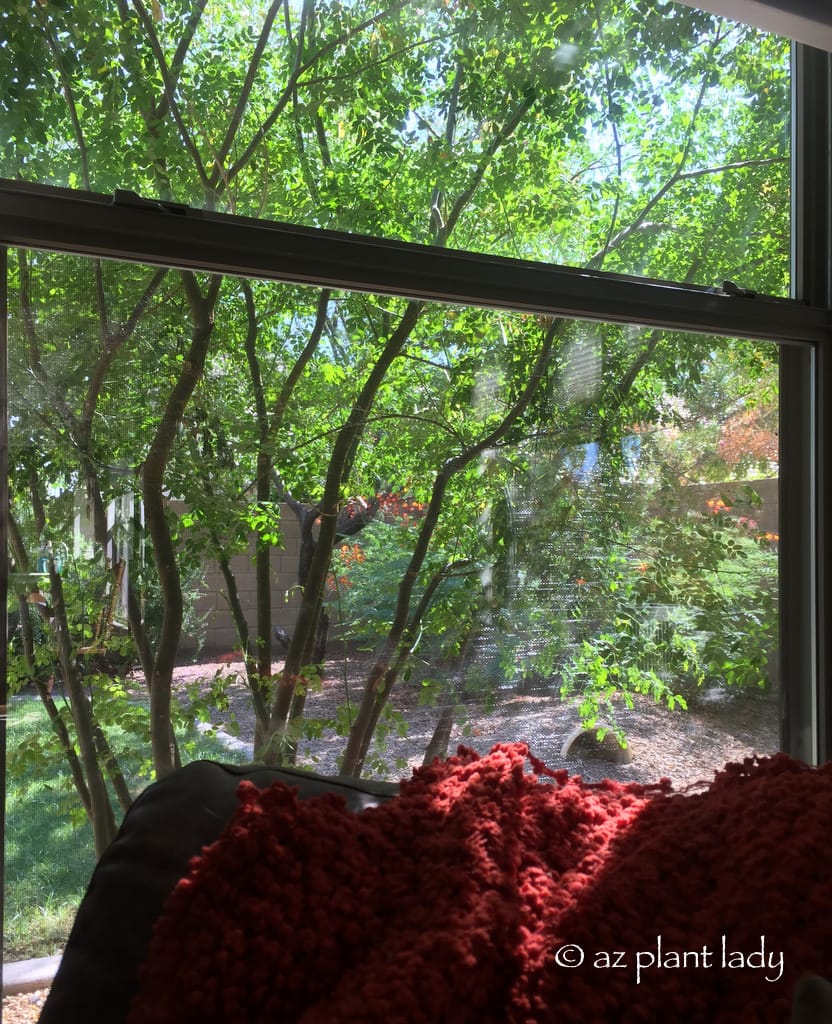
Do you have windows that face outward toward a view that you would rather not see? Perhaps it is the view of the house next door. Or you have a bare wall. Maybe you need some protection from the sun. To solve these problems, have you ever considered using plants in place of curtains?
Green Window Coverings in My Garden
In my garden, I have east-facing windows, which heat the house early in the day. When our home was being built, I designed the landscape so that there were plants placed in front of those windows.
Why would I put plants in front of these windows you may wonder? I needed some sort of shelter from the sun. But I didn’t want curtains that would block my view of the garden, so I chose to add Mexican bird-of-paradise. This yellow-flowering shrub can be pruned into a small tree. This is what I have done, which still allows me to view the garden beyond while providing some protection from the sun’s rays.
Natural, Green Window Coverings – A Designer’s Perspective
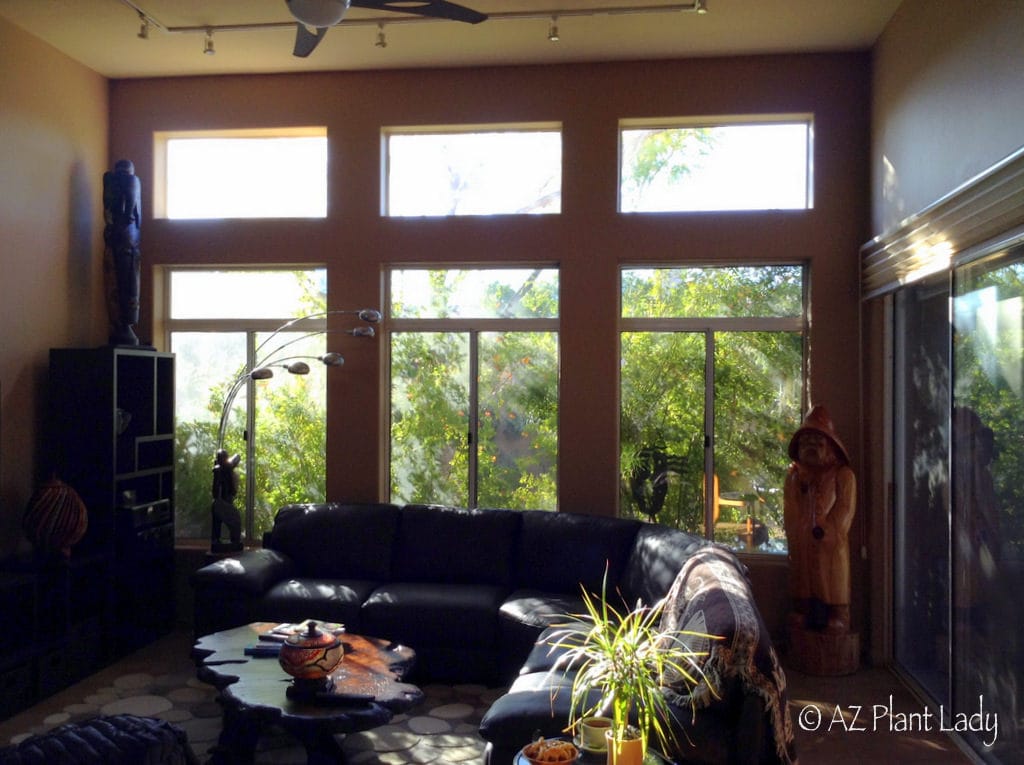
A few years ago, I was working with a client who was an interior designer . She had employed this same strategy for adding beauty while shielding her windows from the sun. She had decided that instead of curtains for her windows, she wanted ‘natural, green’ window coverings.
Orange Jubilee Shrubs as Window Shields
This is the view from her living room. You can see the lush green foliage from the ‘Orange Jubilee’ creates interesting shadows inside and she can enjoy the feeling of being surrounded by beautiful plants, even while indoors.
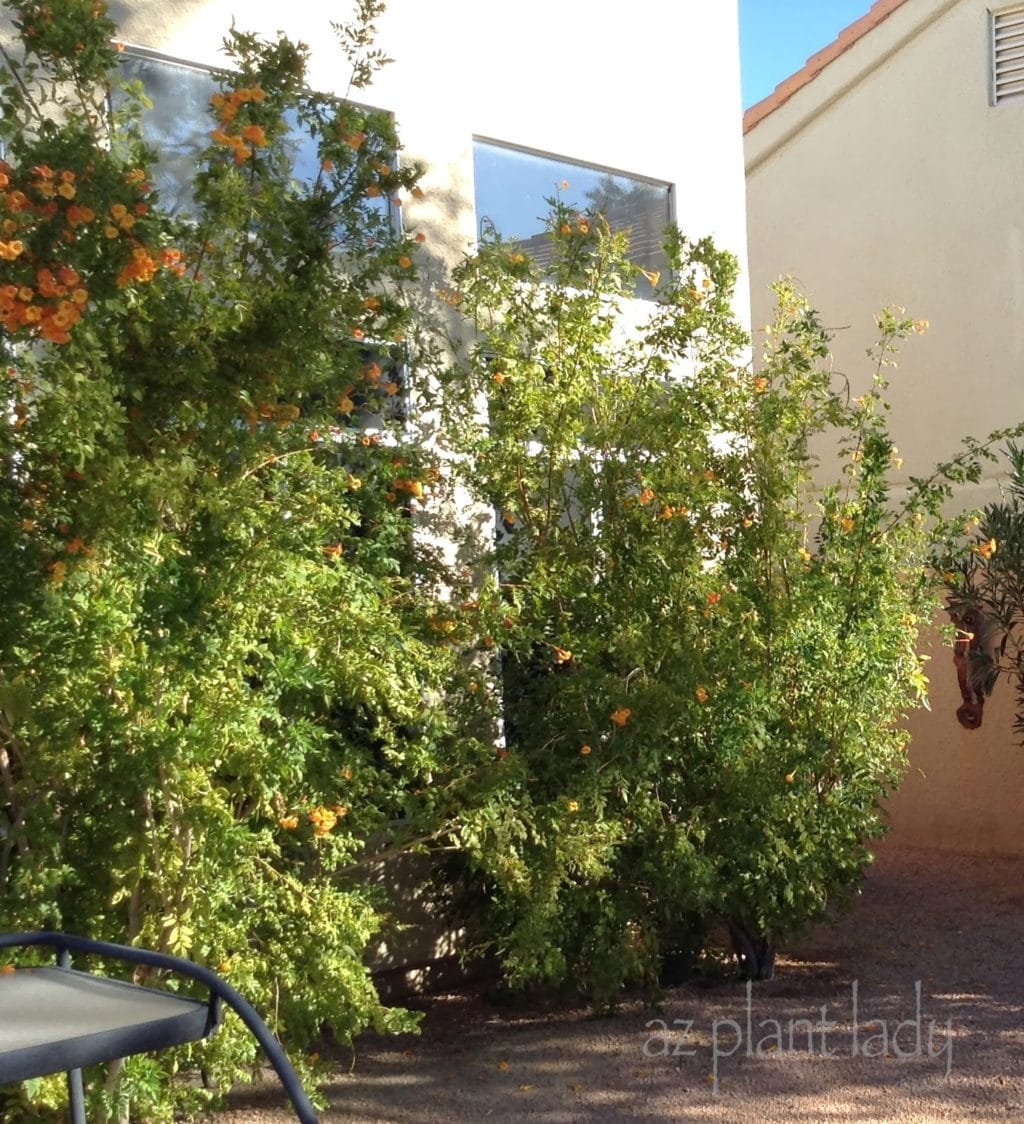
To achieve this, she planted a row of ‘Orange Jubilee’ (Tecoma x ‘Orange Jubilee’) shrubs in front of her windows.
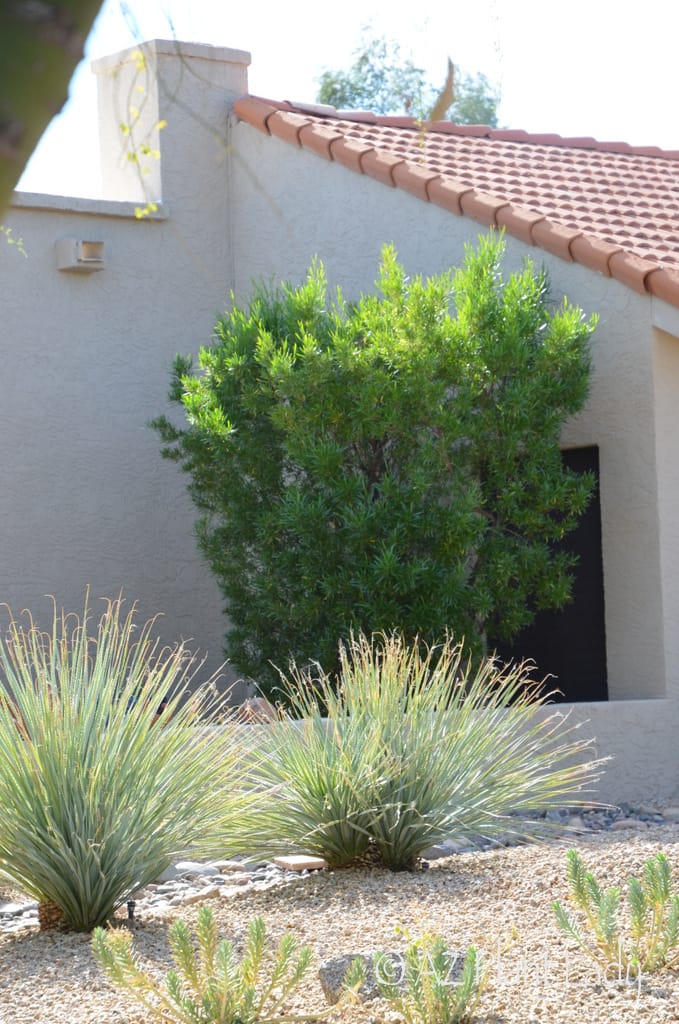
Single Hop Bush – An Alternative to Curtains
Here is another example of using plants in place of curtains. A single hop bush shrub creates a lovely green screen that protects this west-facing window from the blistering afternoon sun.
Have you ever tried using plants instead of curtains? Beyond functioning as a curtain they also work to increase shade and reduce heat islands in neighborhoods. This helps keep homes cooler.



